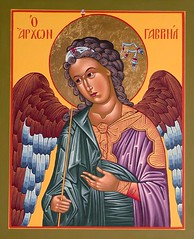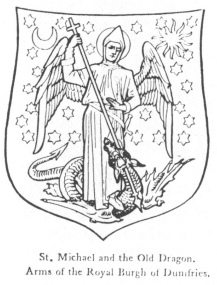
Don't mess with Yogi.
Or Yogis.
Two points refute this:
 First, the Commandment specifically mentions heaven, earth, sea, etc. God seems to be pointing out the type of worship the Israelites encountered in their pagan neighbors like Egypt, Babylonia, Philistia, Canaan, etc. In other words, “heavens,” meaning astrology, “earth,” meaning animism and nature worship, and “sea” meaning various forms of aquatic idolatry, such as Nile worship. So, God is not railing against the inherent evil of an image, but against the practices of the Israelite neighbors, which included any or all of the above.
First, the Commandment specifically mentions heaven, earth, sea, etc. God seems to be pointing out the type of worship the Israelites encountered in their pagan neighbors like Egypt, Babylonia, Philistia, Canaan, etc. In other words, “heavens,” meaning astrology, “earth,” meaning animism and nature worship, and “sea” meaning various forms of aquatic idolatry, such as Nile worship. So, God is not railing against the inherent evil of an image, but against the practices of the Israelite neighbors, which included any or all of the above. 2. Following in this same train, when the Israelites were in the wilderness and were bit by the snakes, God commands Moses to make an image of a bronze serpent and put it on a pole and all the Israelites are to look in faith to this image. This is recounted in Numbers 21. Once again, this is clearly a religious image because Jesus explains it as a type of His crucifixion in John 3:14-15. All who will look to His Holy Cross will be saved from the bite of the real serpent, the devil. So, we have here a vindication of the use of the crucifix. That’s why St. Paul sees power in the Cross of Christ (see Colossians 2:13-15) to disarm the devil’s fallen hierarchy of fallen angels. That’s why crucifixes are used in exorcisms. And it's a rare church that doesn't have a single cross in the place.
2. Following in this same train, when the Israelites were in the wilderness and were bit by the snakes, God commands Moses to make an image of a bronze serpent and put it on a pole and all the Israelites are to look in faith to this image. This is recounted in Numbers 21. Once again, this is clearly a religious image because Jesus explains it as a type of His crucifixion in John 3:14-15. All who will look to His Holy Cross will be saved from the bite of the real serpent, the devil. So, we have here a vindication of the use of the crucifix. That’s why St. Paul sees power in the Cross of Christ (see Colossians 2:13-15) to disarm the devil’s fallen hierarchy of fallen angels. That’s why crucifixes are used in exorcisms. And it's a rare church that doesn't have a single cross in the place.
(Ironically, many will allow an American flag - replete with eagle at the top, symbol of Roman power - to be in their places of worship without a peep!)
3. The Bible itself is full is symbolism, which is merely another form of the use of images. Thus, the Holy Spirit appears in the form of a dove at Christ’s baptism. A dove, then, is legitimately used as an image of the Holy Spirit. The paschal lamb is an image of Christ, and so on. God presents Himself to us in Scripture through a variety of images. Human fathers, then, are an image of our heavenly Father. St. Paul, in Colossians 1:15, says that Christ is the image (Greek is “ikon”) of the invisible God. It was, in fact, the Jews who were enraged at Christ’s claim of divinity, a claim that provoked their erroneous zeal against holy images. How could the invisible Jehovah be Incarnate in a human image? To the Pharisees this was idolatry. But the catholic view gives due honor to the Incarnation by recognizing the validity and holy nature of images as part and parcel of the Incarnation, and this was the reasoning of Nicea II.
5. In Acts 19:11-12, cloths and handkerchiefs are touched by St. Paul, and are then placed upon those possessed and the spirits are driven out by these “relics.” Likewise, the woman with an issue of blood touches the hem of Jesus’ garment and “virtue goes forth from him” to heal her. The bones of Elisha even resurrect a dead soldier (2 Kings 13): this is the entire principle behind relics. Things–matter–stuff can be consecrated/sanctified for a holy purpose. Thus, Jesus spits in the sand and makes clay, rubbing it on the blind man’s eyes to heal him. Jesus could have simply spoken a word and healed the man, but in this instance He chose to use mud–stuff, to do the miracle. We call this the “Incarnational Principle.” It is the same thinking behind all sacramental practice.
6. Likewise, in the OT period, even places were holy. Places like Mt. Sinai, the Temple, etc. But this practice is not rejected in the NT, contrary to what many Protestants may think. In John 5, there is a pool where an angel stirs up the water and the first to enter the pool is healed. This is the principle behind shrines and healing icons. In 2 Peter 1:16-18, St. Peter calls the mountain that he witnessed the transfiguration on the “holy mountain.” So, even in the New Testament the principle of holy places is not abolished as something strictly Old Testament. One sees, then, that there is biblical basis for the catholic practices of relics, images and icons. If there is discernment, it must lie not with strict prohibition, but with regard to application.
 7. The Early Church Fathers are also very clear:
7. The Early Church Fathers are also very clear:
“We do not worship, we do not adore [non colimus, non adoramus], for fear that we should bow down to the creature rather than to the Creator, but we venerate [honoramus] the relics of the martyrs in order the better to adore Him whose martyrs they are.” Against Riparium -St. Jerome
“We by no means consider the holy martyrs to be gods, nor are we wont to bow down before them adoringly, but only relatively and reverentially.” Against Julian -St. Cyril of Alexandria
“We, the Christian community, assemble to celebrate the memory of the martyrs with ritual solemnity because we want to be inspired to follow their example, share in their merits, and be helped by their prayers. Yet we erect no altars to any of the martyrs, even in the martyrs’ burial chapels themselves.”

 | Cathedral Choral Society, Washington National Cathedral - Ye watchers and ye holy ones 17c |  |
 | ||
 | Found at bee mp3 search engine |  |
 In the days before widespread literacy, the Church taught with images. Cultural commentators tell us that images are making a come-back (TV, YouTube, etc.) as the power of the written word seems to diminish among the hoi polloi. While this is to be lamented, all is not lost. Again - the Church taught the faith this way for over a millenium.
In the days before widespread literacy, the Church taught with images. Cultural commentators tell us that images are making a come-back (TV, YouTube, etc.) as the power of the written word seems to diminish among the hoi polloi. While this is to be lamented, all is not lost. Again - the Church taught the faith this way for over a millenium.


 Try noticing where the spear is placed.
Try noticing where the spear is placed. Why?
Why? One of the best loved Christmas Carols is "Good King Wenceslas." In 1853, John Mason Neale chose Wenceslas as the subject for a children’s song to exemplify generosity. It quickly became a Christmas favorite, even though its words clearly indicate that Wenceslas ‘looked out’ on St. Stephen’s Day, the day after Christmas. So Good King Wenceslas is actually a Boxing Day carol! For a tune, Neale picked up a spring carol, originally sung with the Latin text ‘Tempus adest floridum’ or ‘Spring has unwrapped her flowers’ (see below). This original spring tune was first published in 1582 in a collection of Swedish church and school songs.
One of the best loved Christmas Carols is "Good King Wenceslas." In 1853, John Mason Neale chose Wenceslas as the subject for a children’s song to exemplify generosity. It quickly became a Christmas favorite, even though its words clearly indicate that Wenceslas ‘looked out’ on St. Stephen’s Day, the day after Christmas. So Good King Wenceslas is actually a Boxing Day carol! For a tune, Neale picked up a spring carol, originally sung with the Latin text ‘Tempus adest floridum’ or ‘Spring has unwrapped her flowers’ (see below). This original spring tune was first published in 1582 in a collection of Swedish church and school songs. Jolly Old St. Wenceslas
Intergenerational Appeal
 Further, the appeal to walk in the steps that others have forged for us is being used in Benedict XVI's appeal - on this Feast of St. Winceslas - to Europe to recover her Christian patrimony before she reverts to barbarism.
Further, the appeal to walk in the steps that others have forged for us is being used in Benedict XVI's appeal - on this Feast of St. Winceslas - to Europe to recover her Christian patrimony before she reverts to barbarism.In His Master’s Steps
 | Good King Wenceslas (76.76D) |  |
 | ||
 | Found at bee mp3 search engine |  |
 Sources 1, 2, 3, & 4.
Sources 1, 2, 3, & 4.
